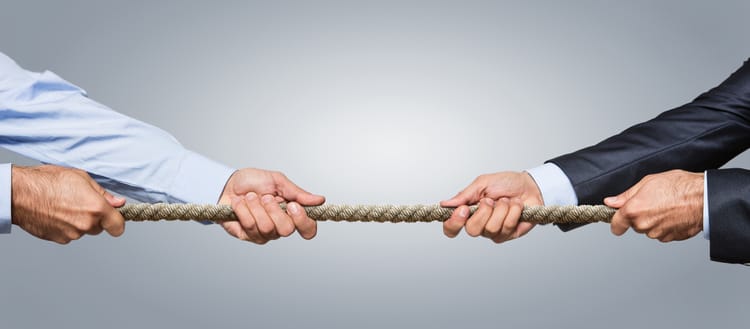The first rule of decision-making

As a leader, your job is to make decisions. There are a few copasetic principles I’ve used over the years that help me with decision-making. Two particular principles help in determining how long you should spend contemplating a decision and who should make the decision. Not all decisions are created equally; what's more, leaders don't need to make all the decisions. These two principles are essential and as you'll see, there's an equally important third principle that's frequently overlooked.
What are the consequences of the decision?
Some decisions carry more weight than other decisions. Accordingly, there’s the notion of Type 1 and Type 2 decisions, famously embraced by Amazon's Jeff Bezos. In this framework, Type 1 decisions are one-way doors requiring thorough analysis. You cannot undo these decisions, so it’s important not to rush into them. Type 2 decisions, on the other hand, are two-way doors. These decisions can be undone. The risk of making a bad Type 2 decision isn’t catastrophic thus the diligence required shouldn’t be arduous. You can make Type 2 decisions faster than Type 1 decisions.
Differentiating between the two types of decisions is key to Amazon’s ability to move fast. As Jeff Bezos wrote in a letter to shareholders in 1997, he felt it important for Amazon leadership to appreciate Type 2 decisions for what they are and not mistake them for crucial Type 1 decisions. Confusing the two means:
“The end result of this is slowness, unthoughtful risk aversion, failure to experiment sufficiently, and consequently diminished invention. We'll have to figure out how to fight that tendency.”
Clearly, this groovy framework works for Amazon and has certainly influenced me in my decision-making. Understanding a decision's consequence underscores how much time I should spend on making it. Higher risk Type 1 decisions demand more of your attention and careful thought.
Who should make the decision?
Determining the consequence of a decision is important, but it's equally imperative to determine who should make the decision. A leader who has built an amazing organization and who provides excellent context shouldn’t necessarily need to make a lot of decisions. If you have a capable team, there are a bevy of decisions you can effectively delegate. For example, as Reed Hastings once opined:
“I take pride in making as few decisions as possible, as opposed to making as many as possible.”
Make no mistake, Reed certainly made decisions in his role as CEO of Netflix and those decisions were most definitely critical to the business. But many other decisions were made by his team of trusted lieutenants. And many of their decisions were delegated to their trusted teams and so forth on down. The idea espoused by Netflix leadership is to ensure everyone has amazing context and thus push decision-making to the appropriate level.
I certainly began my leadership career thinking I should make all the decisions; however, I've learned to embrace Reed's philosophy. I've come to realize that I can empower my teams to make far more informed decisions if I've provided great context.
The more important question to figure out
Distinguishing who should make a decision and the consequences of that decision are certainly important principles in decision-making. But for me, the first rule of decision-making isn’t either of these. Instead, the first rule is to determine when a particular decision needs to be made.
There’s a tendency for leaders to demonstrate confidence and poise under pressure. The need to prove oneself as a component leader manifests itself as fast decision-making. But I’ve come to realize that many seemingly important decisions don’t, in fact, need to be made in the moment. In my experience, determining when to make a decision often helps uncover the consequences of it and accordingly who should properly make the decision.
Deciding when a decision needs to be made doesn’t mean putting off decision-making! Situational awareness is key; bias to action is important. Additionally, analysis paralysis or waiting too long is obviously an ineffective practice. Consequently, deciding when a decision needs to be made may yield an answer of right now! Obviously, if that’s the case, then make sure you’ve gathered the skinny and make a call.
By giving yourself a few moments to consider when a particular decision needs deciding, you reduce the chances of rushing into it. If you determine that an answer isn’t immediately required, you certainly need to figure out when it must be decided. In the course of determining the answer to that equation, you have time to reason through the consequences of the decision and can furthermore figure out who should make the decision.
Decision-making principles
Leadership requires making decisions and I've found it helpful to apply principles. It's important to first figure out when a decision needs to be made. Moreover, determining the consequence of a decision will point out how long to spend making it. Finally, many decisions can be made by people closer to the problem as they're likely more informed than you.
You don't need to make snap decisions all that often. You also don't need to make every decision. Take the time to apply principled decision-making and you'll become a more effective leader.
Can you dig it?




